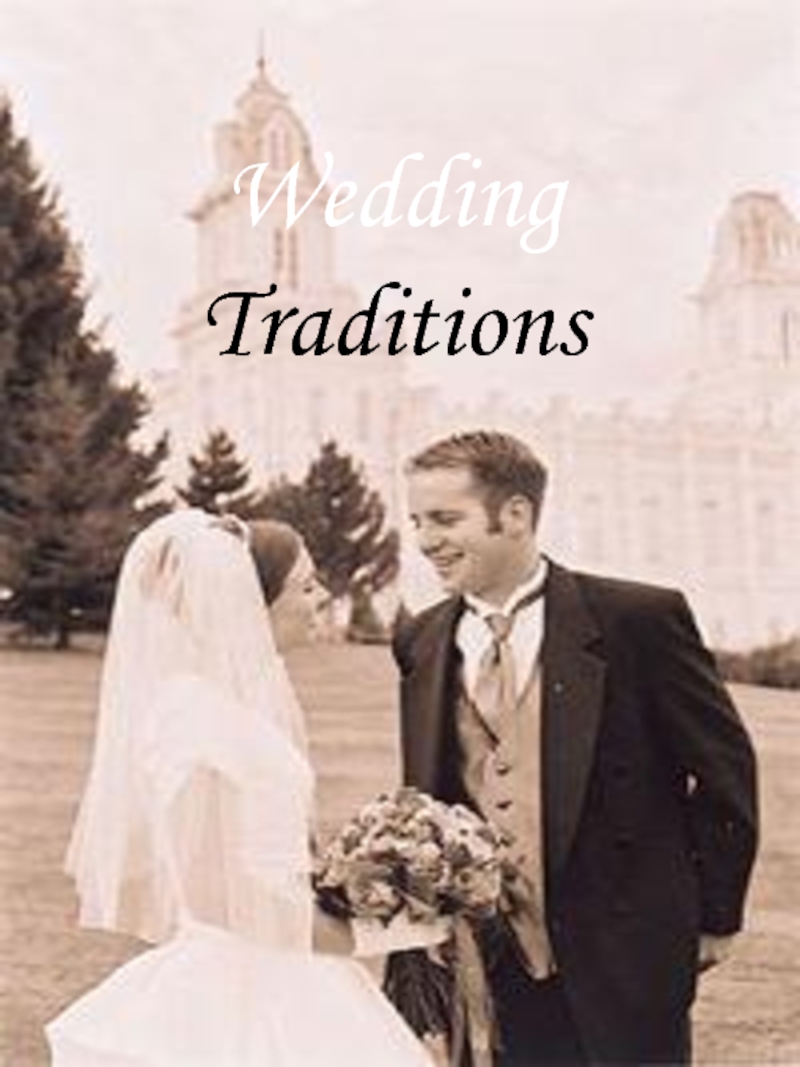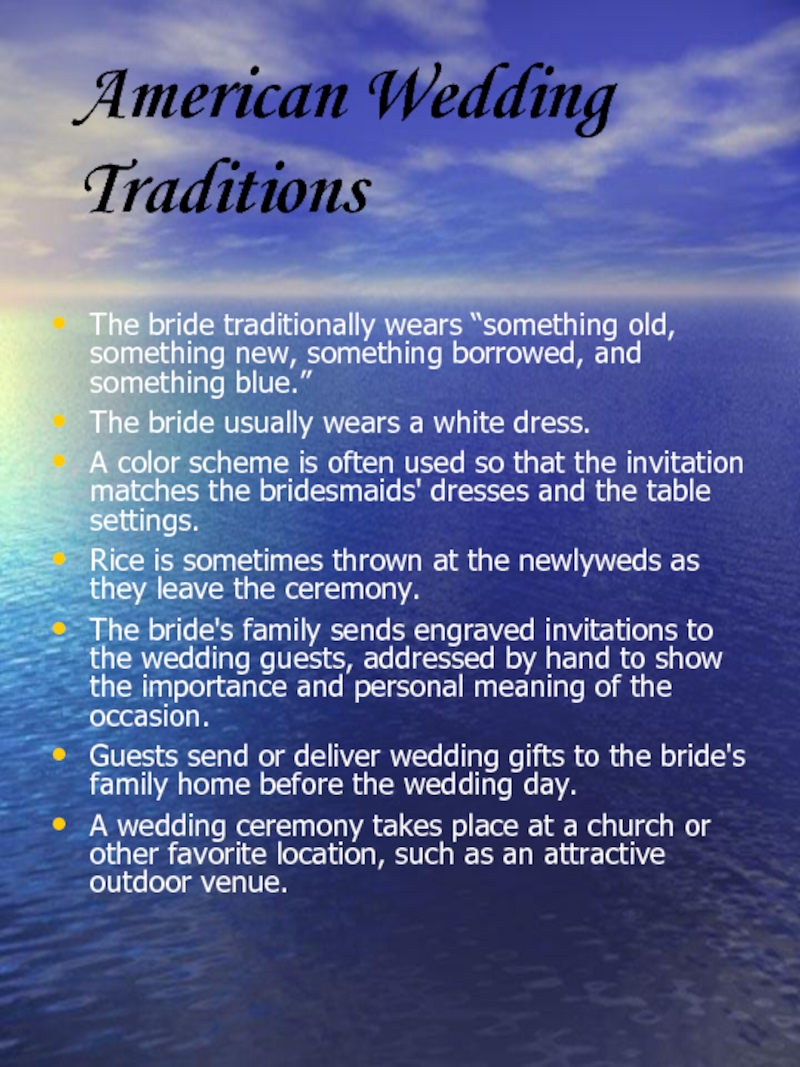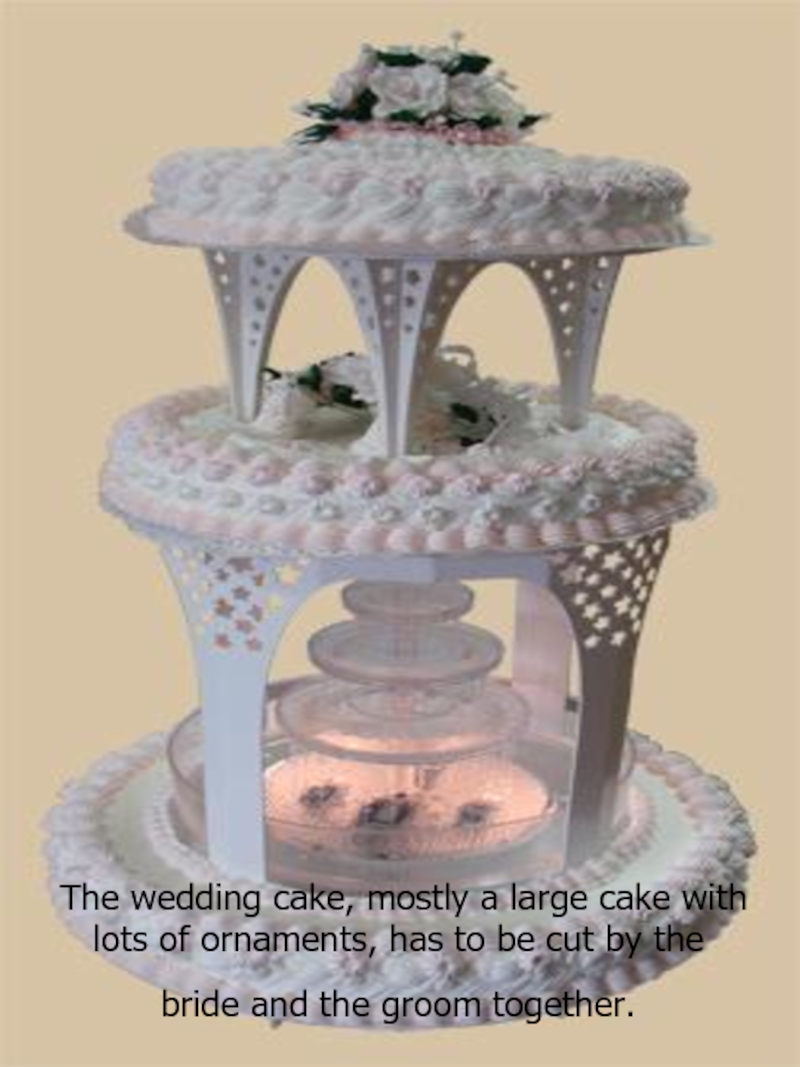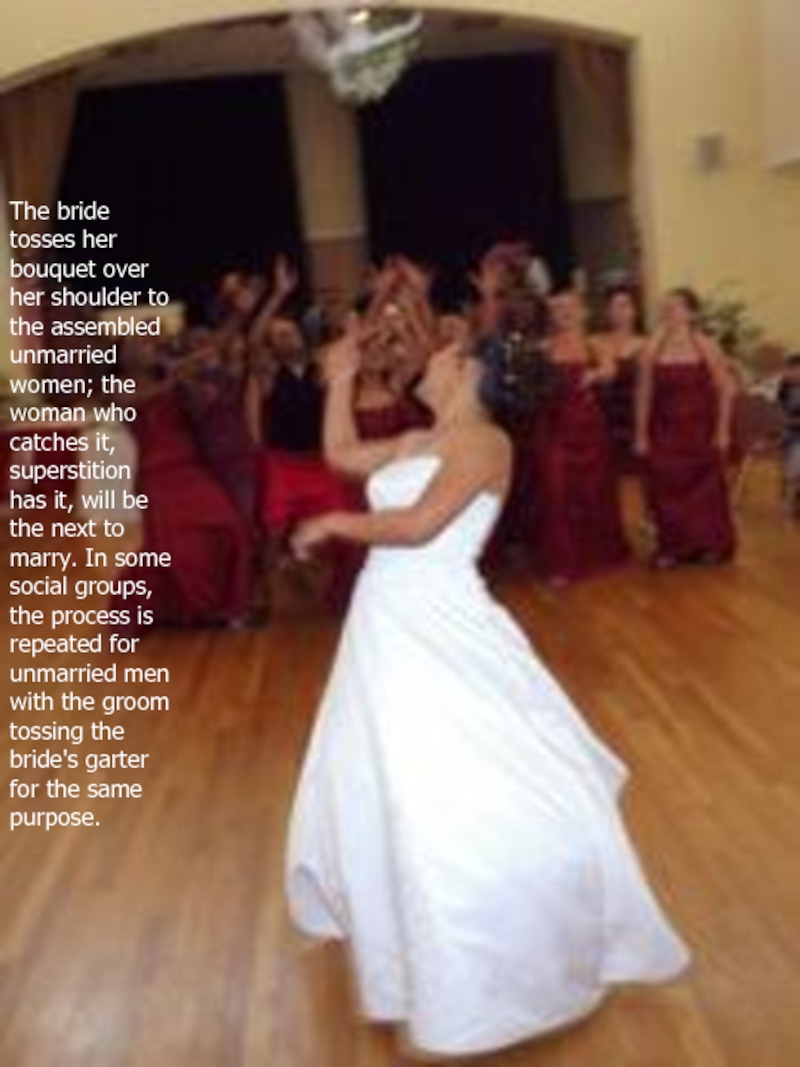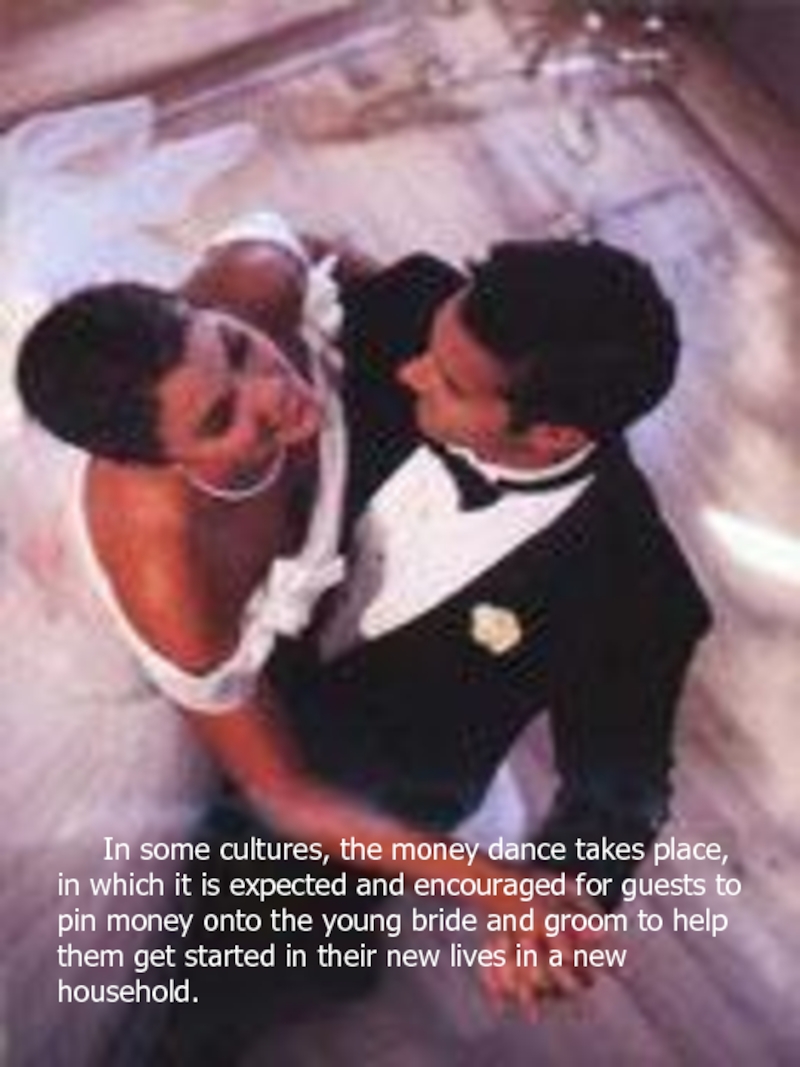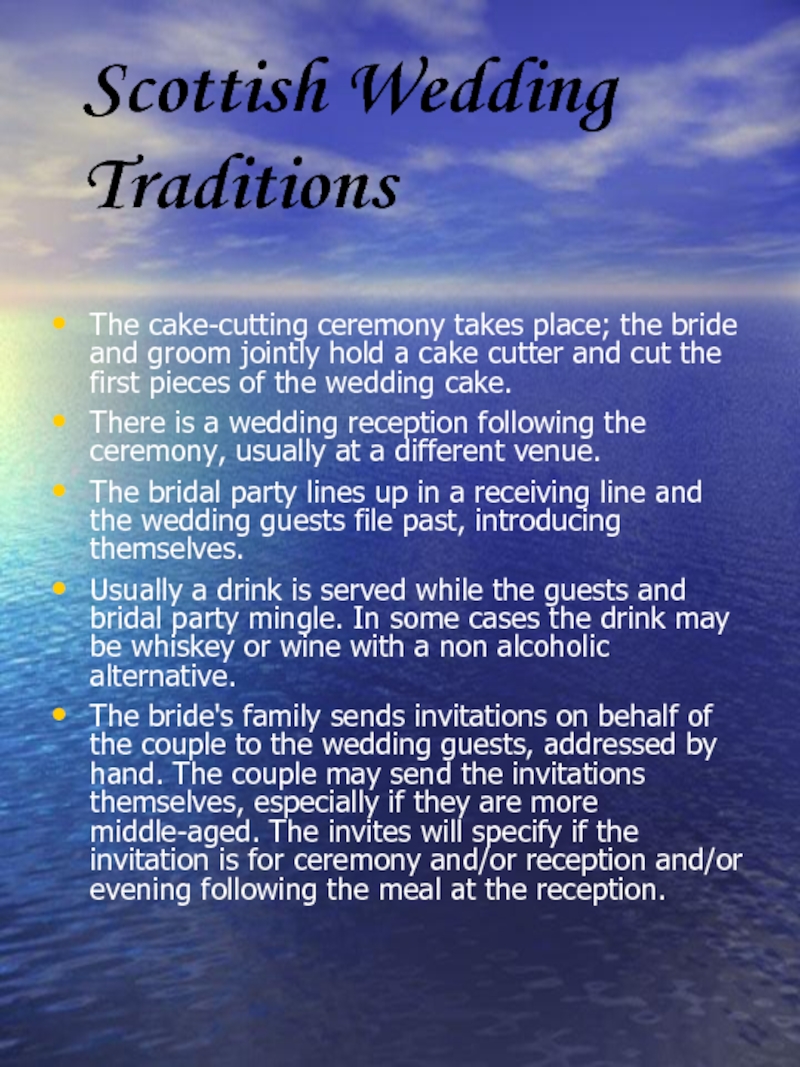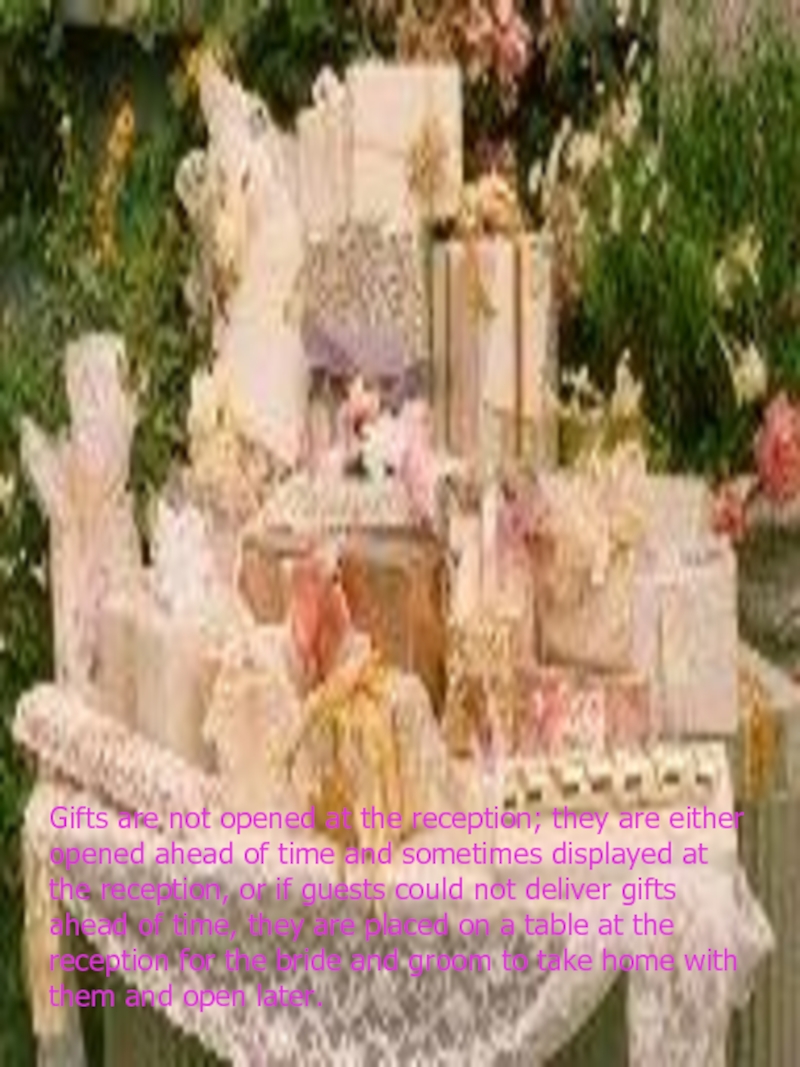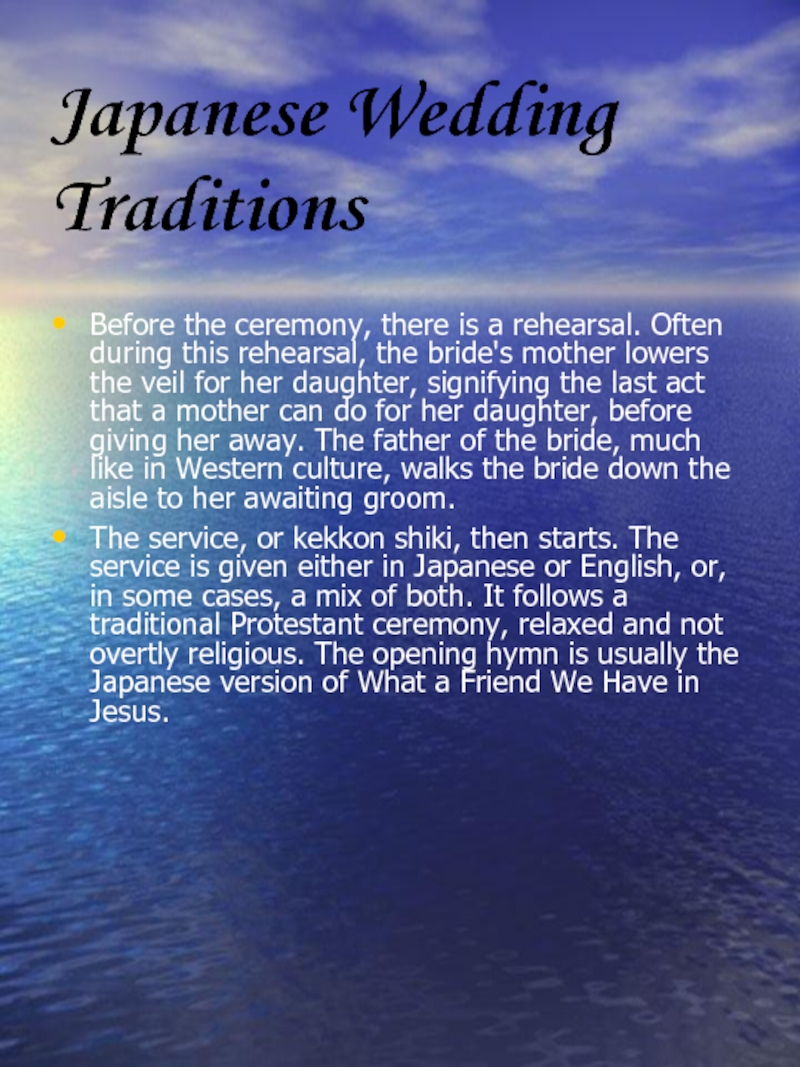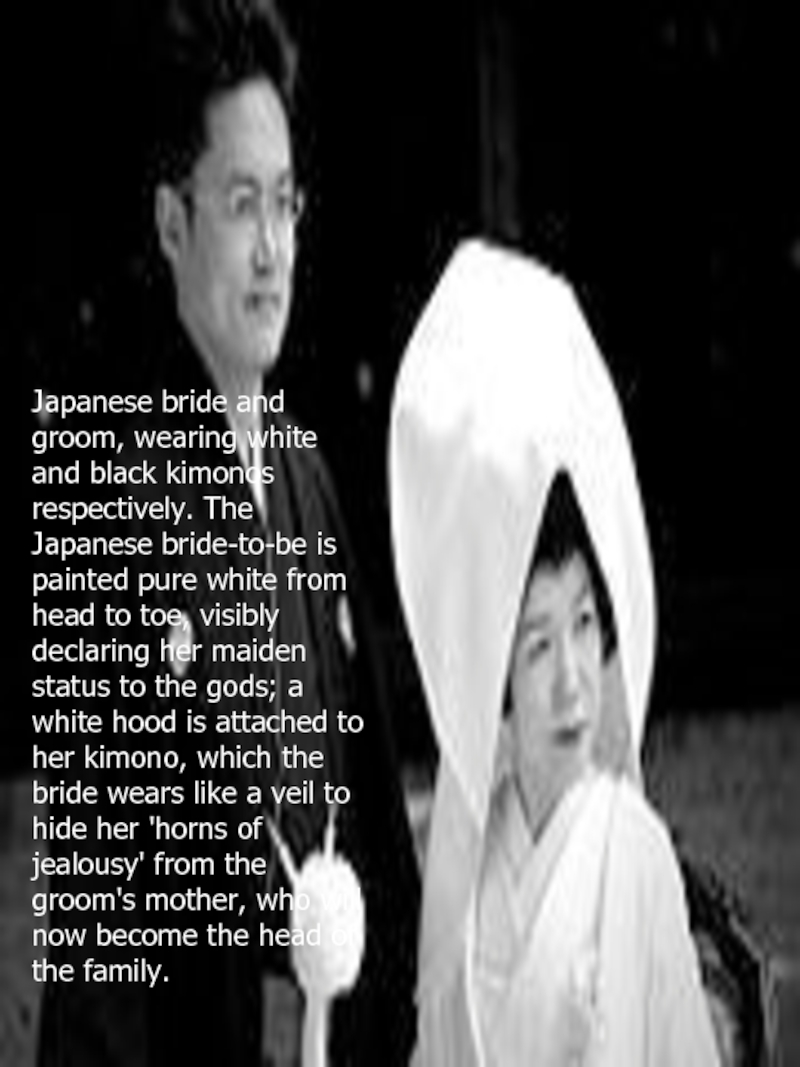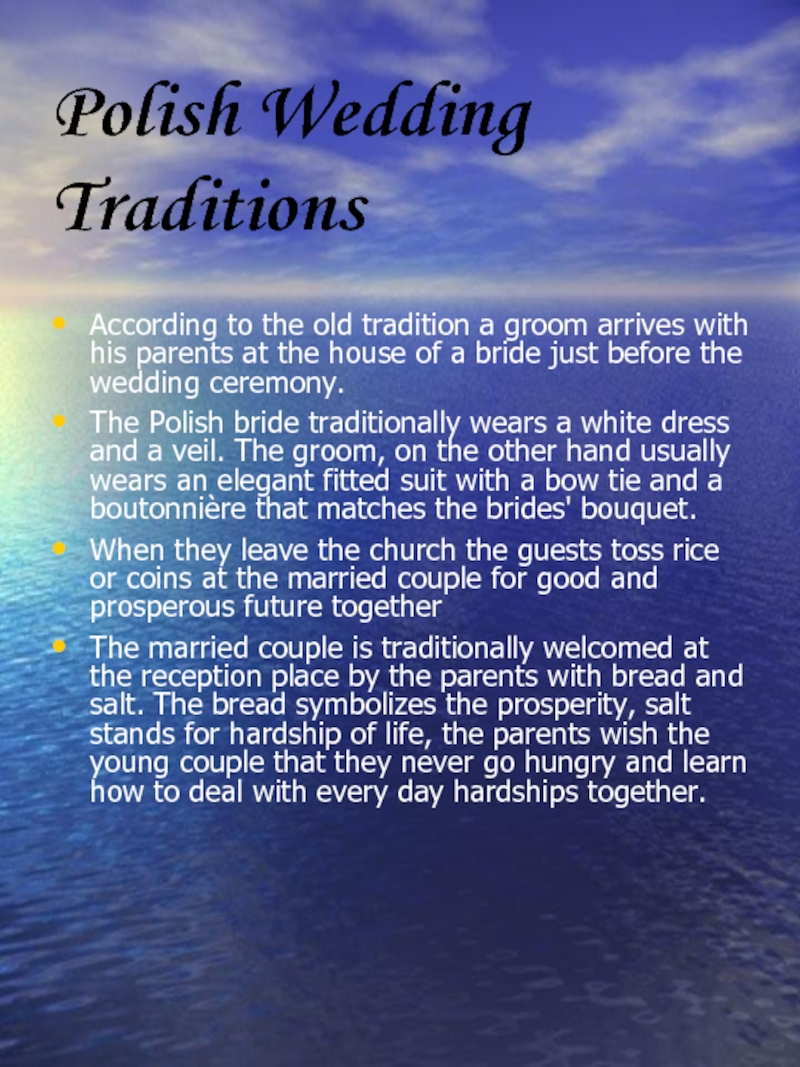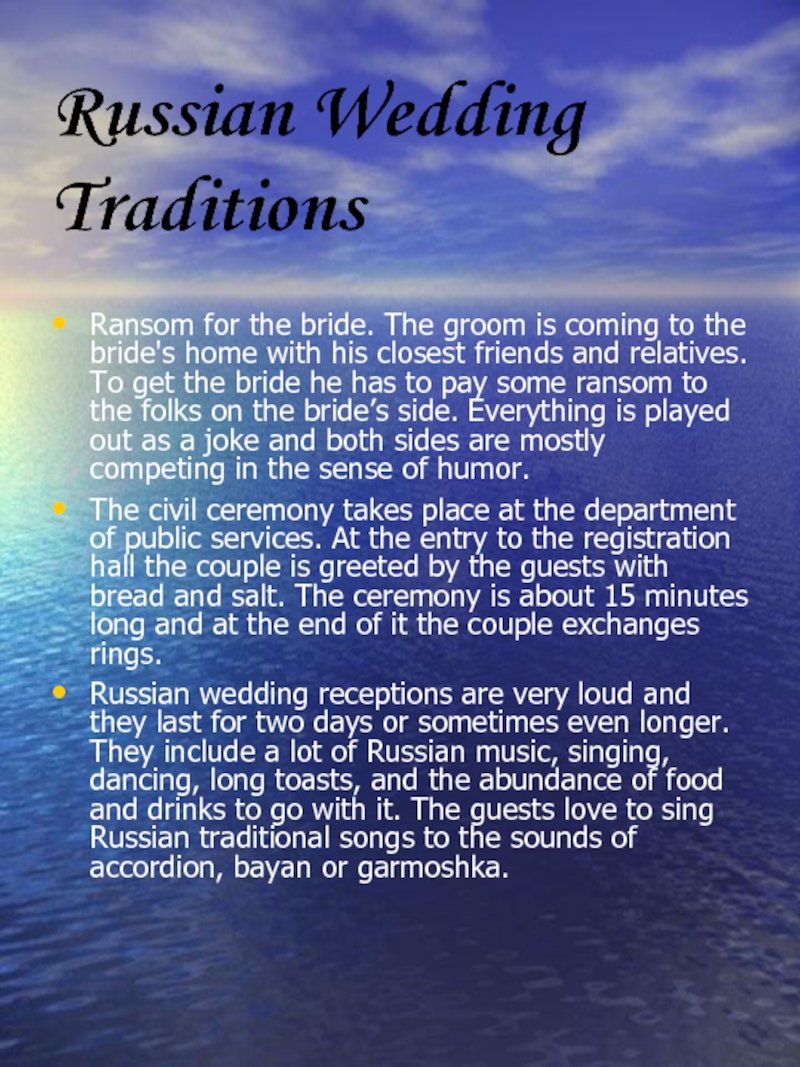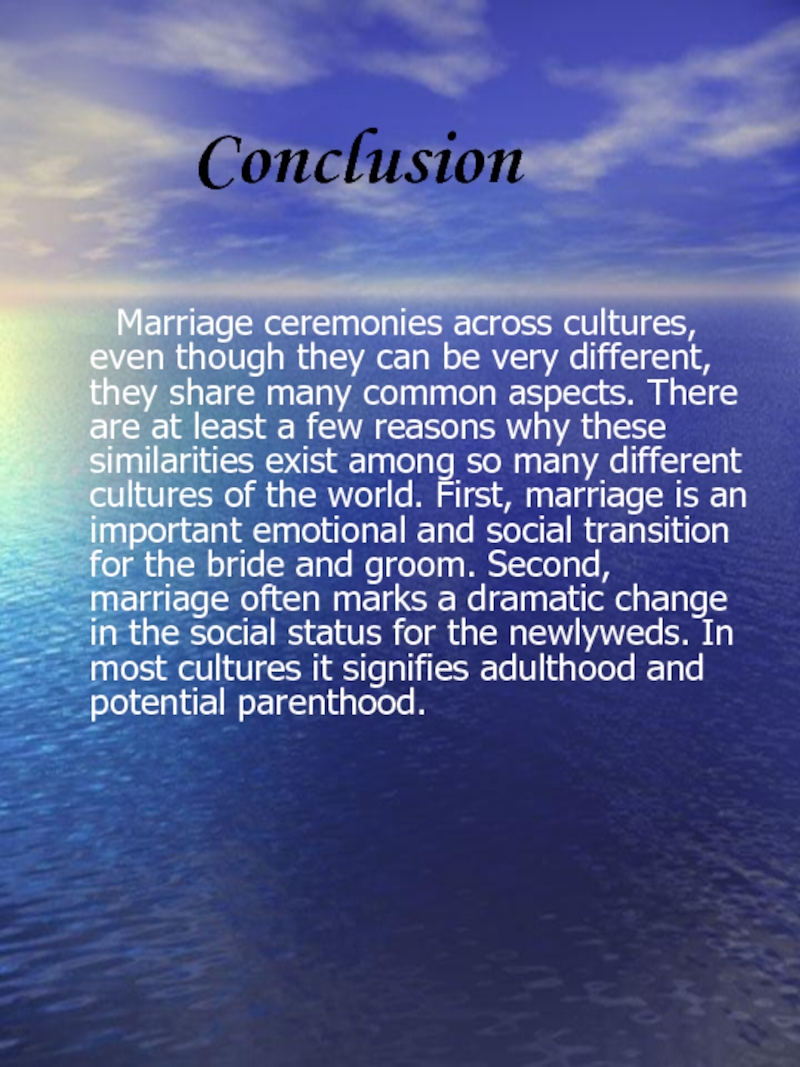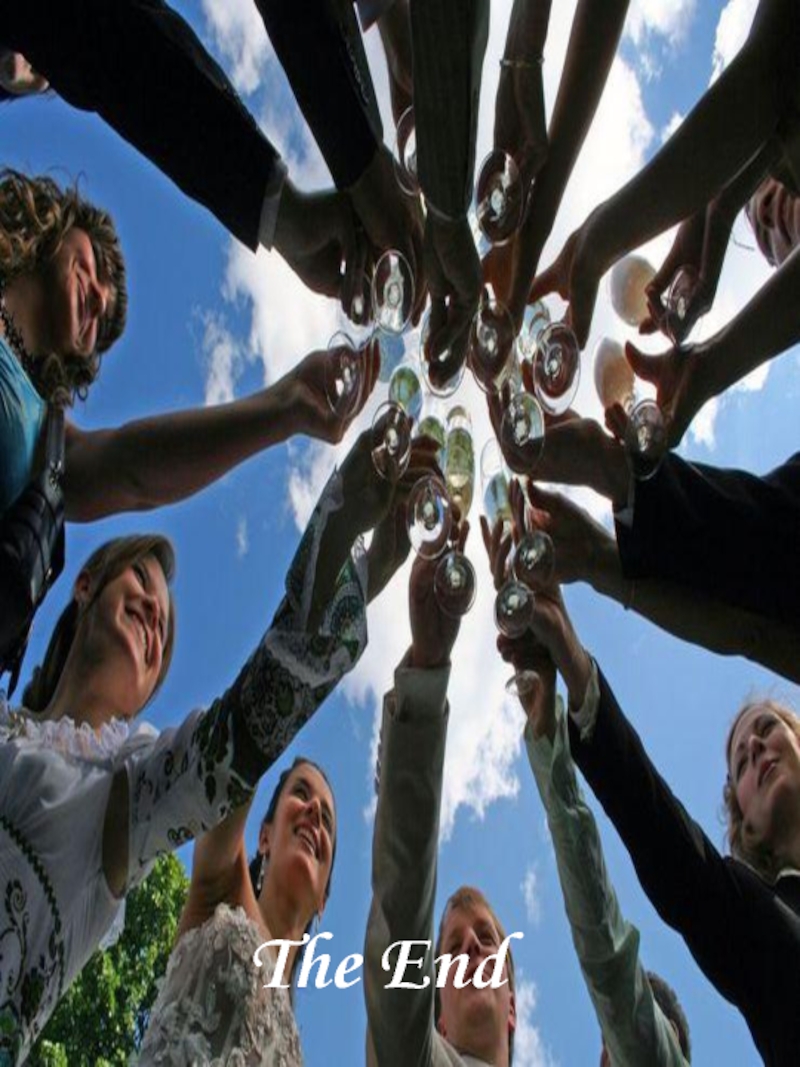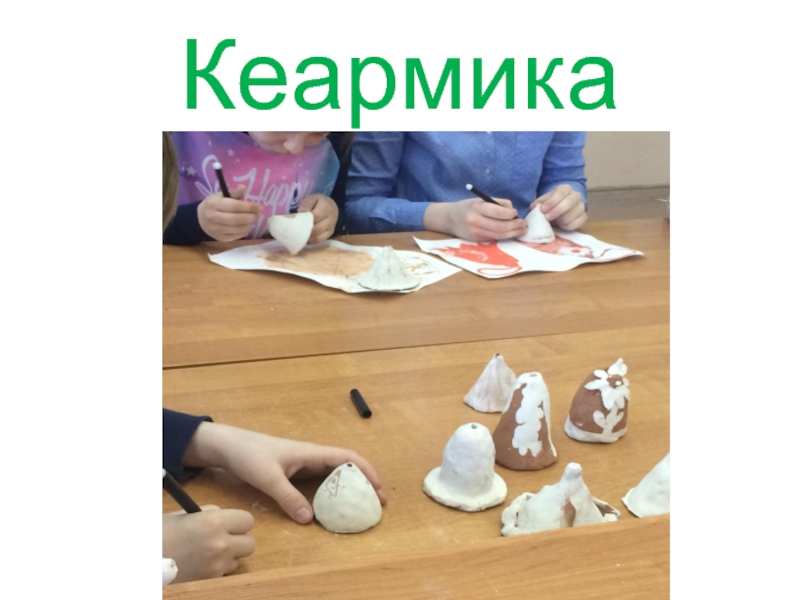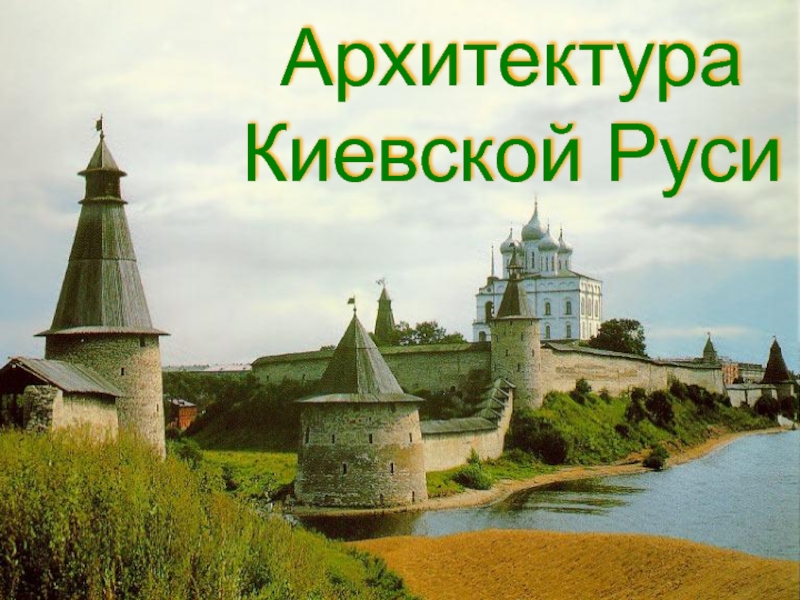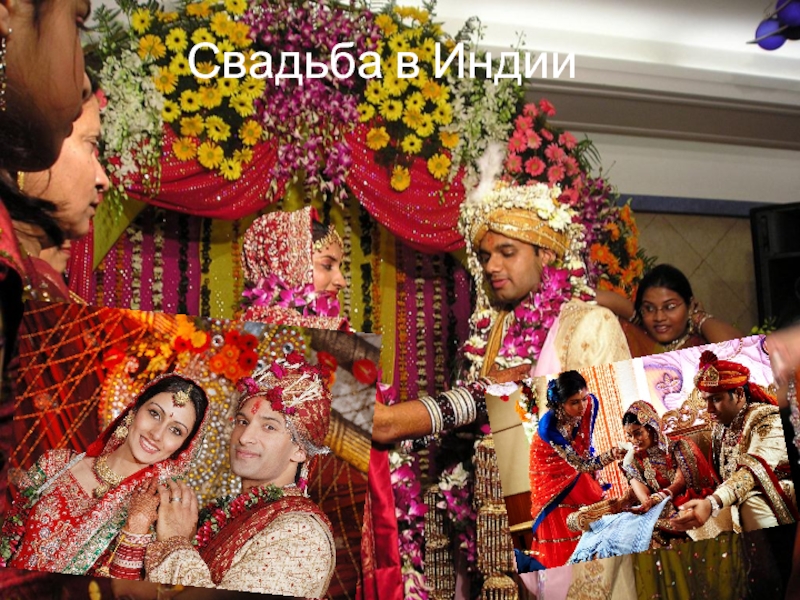- Главная
- Разное
- Дизайн
- Бизнес и предпринимательство
- Аналитика
- Образование
- Развлечения
- Красота и здоровье
- Финансы
- Государство
- Путешествия
- Спорт
- Недвижимость
- Армия
- Графика
- Культурология
- Еда и кулинария
- Лингвистика
- Английский язык
- Астрономия
- Алгебра
- Биология
- География
- Детские презентации
- Информатика
- История
- Литература
- Маркетинг
- Математика
- Медицина
- Менеджмент
- Музыка
- МХК
- Немецкий язык
- ОБЖ
- Обществознание
- Окружающий мир
- Педагогика
- Русский язык
- Технология
- Физика
- Философия
- Химия
- Шаблоны, картинки для презентаций
- Экология
- Экономика
- Юриспруденция
Wedding traditions презентация
Содержание
- 1. Wedding traditions
- 2. American Wedding
- 3. The wedding cake, mostly a large
- 4. The bride tosses her bouquet over her
- 5. In some cultures, the
- 6. Scottish Wedding Traditions The cake-cutting ceremony takes
- 7. Gifts are not opened at the
- 8. Japanese Wedding Traditions Before the ceremony, there
- 9. Japanese bride and groom, wearing white and
- 10. Polish Wedding Traditions According to the old
- 11. Once all the guests had showered the
- 12. Russian Wedding Traditions Ransom for the bride.
- 13. After the official part, it is customary
- 14. Conclusion
- 15. The End
- 16. The project is made by: Ann Solopova Albina Kuleshova Alina Pyatakhina
Слайд 2American Wedding Traditions
The bride traditionally wears
“something old, something new, something borrowed, and something blue.”
The bride usually wears a white dress.
A color scheme is often used so that the invitation matches the bridesmaids' dresses and the table settings.
Rice is sometimes thrown at the newlyweds as they leave the ceremony.
The bride's family sends engraved invitations to the wedding guests, addressed by hand to show the importance and personal meaning of the occasion.
Guests send or deliver wedding gifts to the bride's family home before the wedding day.
A wedding ceremony takes place at a church or other favorite location, such as an attractive outdoor venue.
The bride usually wears a white dress.
A color scheme is often used so that the invitation matches the bridesmaids' dresses and the table settings.
Rice is sometimes thrown at the newlyweds as they leave the ceremony.
The bride's family sends engraved invitations to the wedding guests, addressed by hand to show the importance and personal meaning of the occasion.
Guests send or deliver wedding gifts to the bride's family home before the wedding day.
A wedding ceremony takes place at a church or other favorite location, such as an attractive outdoor venue.
Слайд 3 The wedding cake, mostly a large cake with lots of
ornaments, has to be cut by the bride and the groom together.
Слайд 4The bride tosses her bouquet over her shoulder to the assembled
unmarried women; the woman who catches it, superstition has it, will be the next to marry. In some social groups, the process is repeated for unmarried men with the groom tossing the bride's garter for the same purpose.
Слайд 5 In some cultures, the money dance takes place,
in which it is expected and encouraged for guests to pin money onto the young bride and groom to help them get started in their new lives in a new household.
Слайд 6Scottish Wedding Traditions
The cake-cutting ceremony takes place; the bride and groom
jointly hold a cake cutter and cut the first pieces of the wedding cake.
There is a wedding reception following the ceremony, usually at a different venue.
The bridal party lines up in a receiving line and the wedding guests file past, introducing themselves.
Usually a drink is served while the guests and bridal party mingle. In some cases the drink may be whiskey or wine with a non alcoholic alternative.
The bride's family sends invitations on behalf of the couple to the wedding guests, addressed by hand. The couple may send the invitations themselves, especially if they are more middle-aged. The invites will specify if the invitation is for ceremony and/or reception and/or evening following the meal at the reception.
There is a wedding reception following the ceremony, usually at a different venue.
The bridal party lines up in a receiving line and the wedding guests file past, introducing themselves.
Usually a drink is served while the guests and bridal party mingle. In some cases the drink may be whiskey or wine with a non alcoholic alternative.
The bride's family sends invitations on behalf of the couple to the wedding guests, addressed by hand. The couple may send the invitations themselves, especially if they are more middle-aged. The invites will specify if the invitation is for ceremony and/or reception and/or evening following the meal at the reception.
Слайд 7 Gifts are not opened at the reception; they are either opened
ahead of time and sometimes displayed at the reception, or if guests could not deliver gifts ahead of time, they are placed on a table at the reception for the bride and groom to take home with them and open later.
Слайд 8Japanese Wedding Traditions
Before the ceremony, there is a rehearsal. Often during
this rehearsal, the bride's mother lowers the veil for her daughter, signifying the last act that a mother can do for her daughter, before giving her away. The father of the bride, much like in Western culture, walks the bride down the aisle to her awaiting groom.
The service, or kekkon shiki, then starts. The service is given either in Japanese or English, or, in some cases, a mix of both. It follows a traditional Protestant ceremony, relaxed and not overtly religious. The opening hymn is usually the Japanese version of What a Friend We Have in Jesus.
The service, or kekkon shiki, then starts. The service is given either in Japanese or English, or, in some cases, a mix of both. It follows a traditional Protestant ceremony, relaxed and not overtly religious. The opening hymn is usually the Japanese version of What a Friend We Have in Jesus.
Слайд 9Japanese bride and groom, wearing white and black kimonos respectively. The
Japanese bride-to-be is painted pure white from head to toe, visibly declaring her maiden status to the gods; a white hood is attached to her kimono, which the bride wears like a veil to hide her 'horns of jealousy' from the groom's mother, who will now become the head of the family.
Слайд 10Polish Wedding Traditions
According to the old tradition a groom arrives with
his parents at the house of a bride just before the wedding ceremony.
The Polish bride traditionally wears a white dress and a veil. The groom, on the other hand usually wears an elegant fitted suit with a bow tie and a boutonnière that matches the brides' bouquet.
When they leave the church the guests toss rice or coins at the married couple for good and prosperous future together
The married couple is traditionally welcomed at the reception place by the parents with bread and salt. The bread symbolizes the prosperity, salt stands for hardship of life, the parents wish the young couple that they never go hungry and learn how to deal with every day hardships together.
The Polish bride traditionally wears a white dress and a veil. The groom, on the other hand usually wears an elegant fitted suit with a bow tie and a boutonnière that matches the brides' bouquet.
When they leave the church the guests toss rice or coins at the married couple for good and prosperous future together
The married couple is traditionally welcomed at the reception place by the parents with bread and salt. The bread symbolizes the prosperity, salt stands for hardship of life, the parents wish the young couple that they never go hungry and learn how to deal with every day hardships together.
Слайд 11Once all the guests had showered the couple with kisses,hugs and
beautiful flowers everyone heads to the reception. It is a very popular custom in Poland to prepare "passing gates" on the way to the reception for the newlyweds, who in order to pass have to give the "gate keepers" some vodka.
Слайд 12Russian Wedding Traditions
Ransom for the bride. The groom is coming to
the bride's home with his closest friends and relatives. To get the bride he has to pay some ransom to the folks on the bride’s side. Everything is played out as a joke and both sides are mostly competing in the sense of humor.
The civil ceremony takes place at the department of public services. At the entry to the registration hall the couple is greeted by the guests with bread and salt. The ceremony is about 15 minutes long and at the end of it the couple exchanges rings.
Russian wedding receptions are very loud and they last for two days or sometimes even longer. They include a lot of Russian music, singing, dancing, long toasts, and the abundance of food and drinks to go with it. The guests love to sing Russian traditional songs to the sounds of accordion, bayan or garmoshka.
The civil ceremony takes place at the department of public services. At the entry to the registration hall the couple is greeted by the guests with bread and salt. The ceremony is about 15 minutes long and at the end of it the couple exchanges rings.
Russian wedding receptions are very loud and they last for two days or sometimes even longer. They include a lot of Russian music, singing, dancing, long toasts, and the abundance of food and drinks to go with it. The guests love to sing Russian traditional songs to the sounds of accordion, bayan or garmoshka.
Слайд 13After the official part, it is customary for the bride and
groom, and some of their close friends and relatives to go on a tour of the historic sites of the city, taking pictures and drinking champagne.
Слайд 14 Conclusion
Marriage ceremonies across cultures,
even though they can be very different, they share many common aspects. There are at least a few reasons why these similarities exist among so many different cultures of the world. First, marriage is an important emotional and social transition for the bride and groom. Second, marriage often marks a dramatic change in the social status for the newlyweds. In most cultures it signifies adulthood and potential parenthood.
